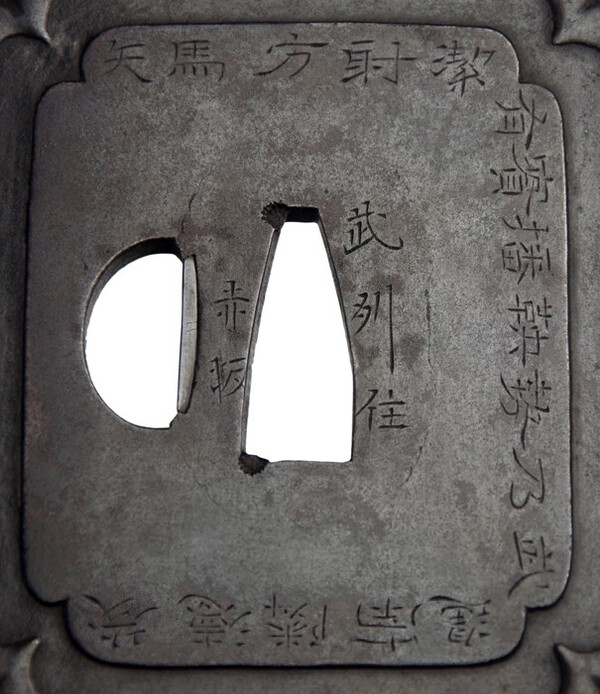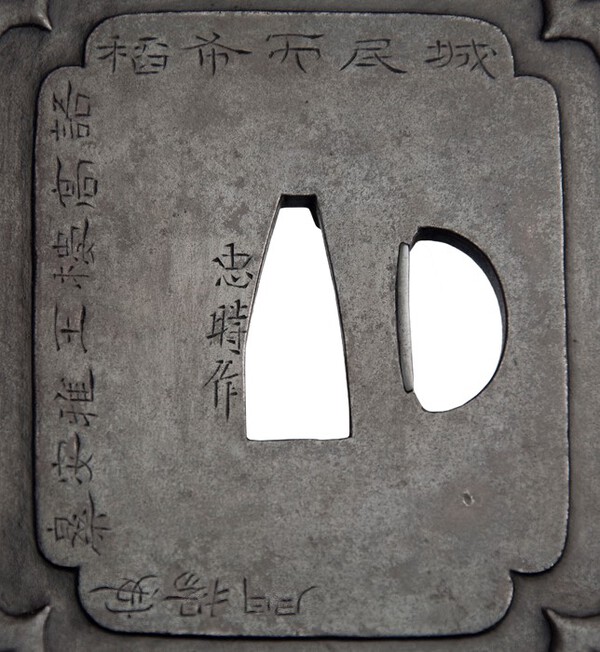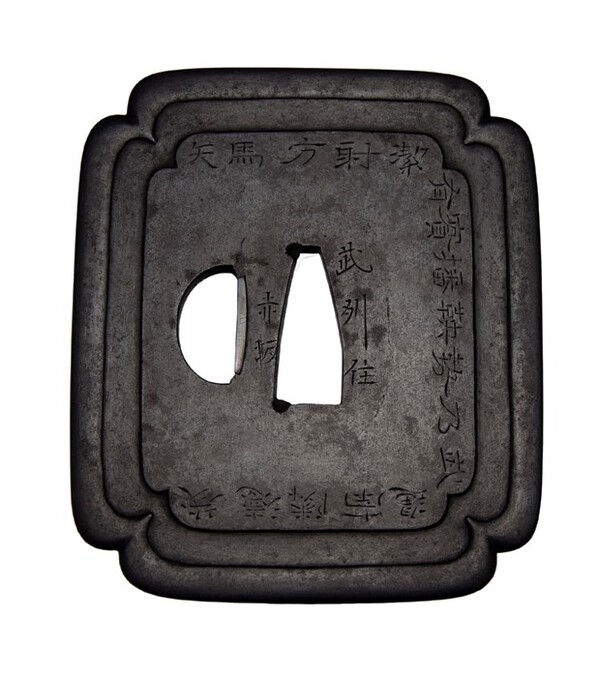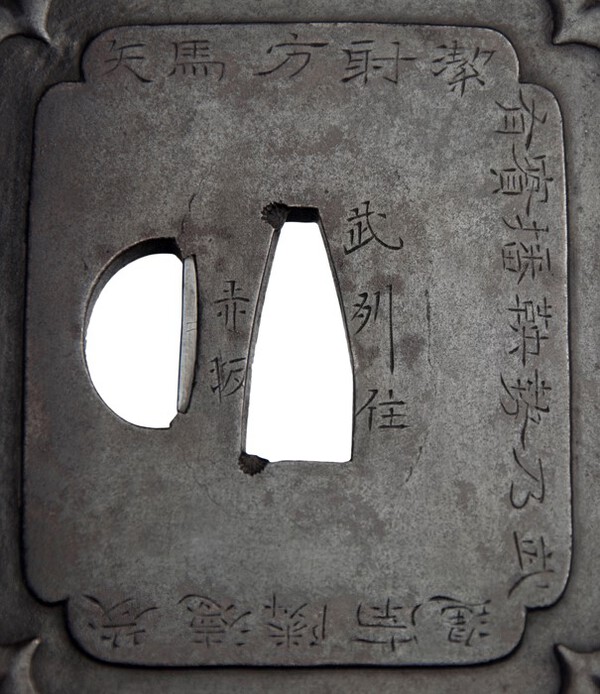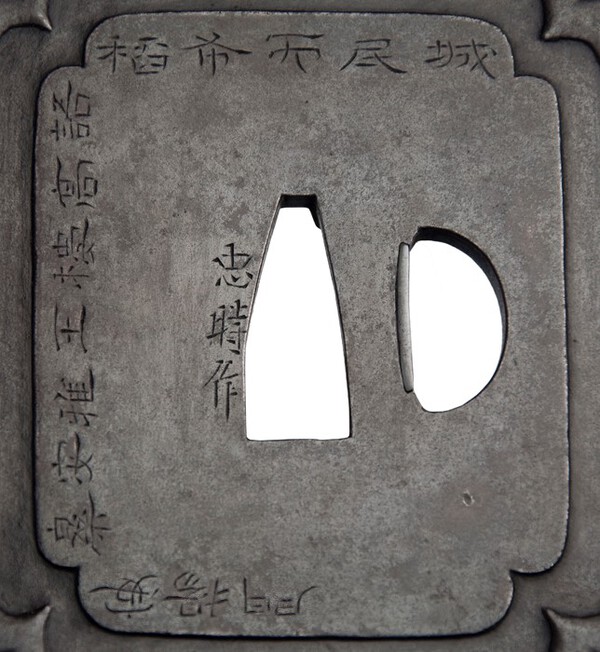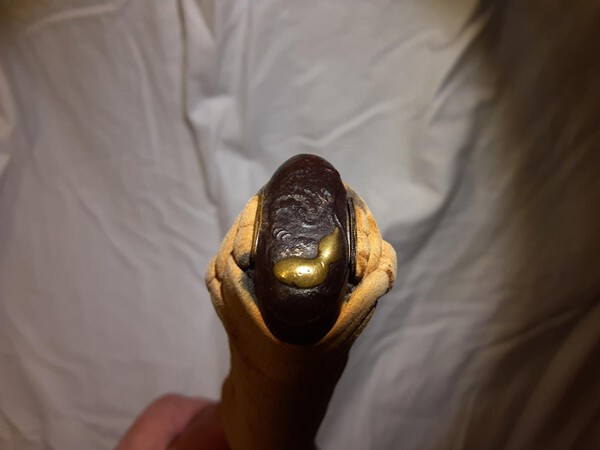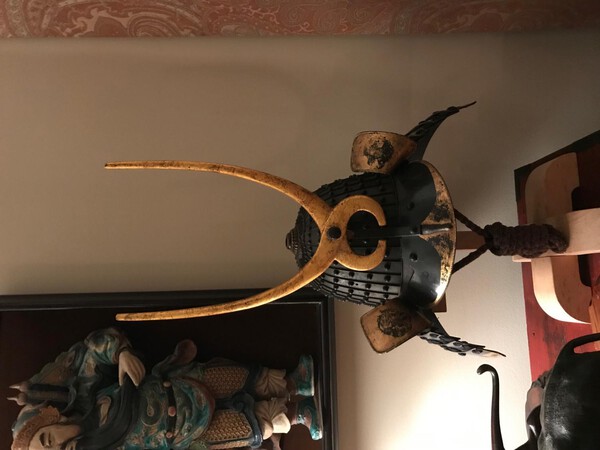-
Posts
300 -
Joined
-
Last visited
Everything posted by Japan2112
-
56% of my tsuba have (NBTHK) papers. Of these I had only submitted 3 myself, and those were for TokuHo. The 3 were so nice I thought they deserved a high level quality confirmation. Of the 3, two came back what I knew them to be, the 3rd I was a little disappointed by the NBTHK not stating what I thought was obvious (they papered to "Akasaka", not "ko Akasaka"). It still is ko Akasaka, but now with a TokuHo.
-
I think I will stop and wait. The reading I've done on Chinese and Japanese poetry has me overwhelmed as swords had many years ago. If I have taken a wrong turn, then I;d rather know before going further. Thanks, Grev, for your encouragement.
-
Hi Steve, and anyone else listening. Your organization of kanji this tsuba was a great help. I do not know how or where to search for kanji. If someone can help me that would be a boost. I have added the images again of the omote and ura. I took a direction this week and here where it has taken me. It may be two haiku in 5-7-5 and the 5-7-3 (?) meter (the last line may have 5 modae?). I want to say that this is my FIRST attempt at anything like this so I apologize for the basic nature of this quest. Thanks to anybody who wishes to direct or redirect me in this one. Mark Note: those kanji in red or 囗 mean that I haven’t found a suitable placement Face (表, Omote) – in modern order (left to right) (Thanks, Steve). 1. 矢 馬 方 射 潔 2. 有 賓 播 鞅 勢 乃 武 3. 遙 南 隣 囗 囗 Omote – 1. Top row ordered 矢 馬 方 射 潔 Shǐ Mǎ Hō Shè Jié arrow horse one shoot clean Omote 2. R. Lateral row ordered 有 賓 播 鞅 勢 乃 武 Yǒu Bīn Bō yāng Shì Nǎi Wǔ Have Guest sow potential thereupon martial arts Omote – Bottom row ordered 遙 南 隣 囗 囗 Yáo Nán Tonari Distant south next to Back ( 裏,Ura ) – in modern order (left to right) 4. 城 民 天 希 稻 5. 語 高 王 樓 推 安 囗 6. 安 揚 門 Ura – 4. Top row ordered . 稻 希 天 民 城 Dào xī Tiān min chéng Rice hope day people city Ura – 5. L. Lateral row ordered 囗 安 推 王 樓 高 語 囗 Tuī wáng lóu gao Yǔ 囗 push king floor high speech 6. Ura – Bottom row ordered 門 揚 安 Mén Yáng 囗 gate raise 囗
-
That is a good start, and thank you.
-
Hello all, I am hoping for some guidance or translation on what I think is a poem on this Akasaka tsuba. I was told that it is in an archaic clerical script, but what do I know? I am fine with reading the mei, just the decorative poem is a challenge for me. Thank you for your assistance. Mark
-
Late Edo. I am not sure of the reason, but you will see that dual suhama gata sometimes in Shoami.
-
I am gaining confidence in late Edo Higo. Thanks for all replies.
-
Hello all, I bought this inexpensive koshirae at the Atlanta show last weekend, but not exactly sure what era or region it may represent. I apologize for the sketchy images, but I just took them quickly on my sofa. I like the perfect brown ishime saya and deer skin(?) wrap. F/K, and koijiri are iron with bamboo and gourd theme. Menuki are gold crabs on bamboo. Sageo is soft and looks old. Tsuba - nice iron. Maybe Higo? Open to ideas. Thank you. Mark
-
I like them both, and initial thought was #1 as the better. #2 has a more interesting age and wrap, but the fittings on number #1 look elegant. And so, all a matter of taste. Each is nicer for its own reasons.
-
Hmmm. Looks late. Shoami did the two similar suhama gata hitsu.
-
I would like to understand more of the iron sand source influences in tsuba, and how they can affect the "best iron" later resulting from processing and finishing. As Ford says, it's from the tartara that the tamahagane is sorted and the less desirable (carbon content and level of impurity) imparted to armor, tsuba...? The raw material suggests a certain foundation. To me Owari (Nobuie, Kanayama, Ko Owari, Yamakichibei...) have "strong" iron, and among the best in terms of material. Higo and Akasaka, based partially on their later manufacture (and homogenous material), seem to have produced "great" tsuba by their iron finishing. Especially yondai Tadatoki. He seemed to have had an exquisite palette. And the Edo Myochin, had gotten the hammer work down, and made well beyond the "factory plate". I would say that these three components all come together in different ways and in different tsuba, and it becomes the tsuba, not necessarily the school that posesses the best iron. One tends to know that when it's experienced - the ring, tactile sense,color, kitae, and weight. My humble opinion.
-
I cleaned an iron tsuba with some deer antler and overdid it. Hung it by the screen in my lanai (in Florida) where it got indirect rain sometimes and a lot of humidity and sunshine. The copper sekigane look great now while the iron is slowly improving ( 3 months)
-
-
You'll sometimes see a variety of different hitsu shapes on Heian jo tsuba - gourds, mushrooms, organic shapes, sometimes to compliment the natural components on the plate. I think it makes them look more interesting.
-
Bruno, That's a very nice (ko) katchushi. What are its dimensions, might I ask?
-
Very nice ko kinko. Go careful on the cleaning though. Patina means a lot.
-
... as does the kebori (hair line engraving) and irregular stature of the work. Tosa Myochin that is. Remember though, that the Tosa Myochin (like Muneyoshi) were taught by and considered better than the kodai Akasaka masters. I would go with Tosa Myochin.Nice tsuba. I like the pine forest motif.
-
Here's one that always captures my imagination. Being a bonsai enthusiast it reminds me of a root cutter, but maybe tongs. What is really very interesting with maedate is the combination of Shin ni gami (death spirit) with something else. It is really a fascinating topic that defies documentation.
-
Let's start this off with the big bag of "Bushu"
-
The motifs look to varied (and some even fantastic) to be of a single school.That is all I am able to contribute,
-
That's a really nice tsuba. Usually if you see karigane you have Owari, but the overall feel is Kyo. I like the iron in your pictures. Sunlight does strange and wonderful things to tsuba. I think early morning or near sunset light usually brings out the "best"
-
A little late to this thread but with iron tsuba, it's all about the iron. When comparing the Sasano Owari to the other consider that the other looks like plate not a wrought item. Then color/finish to me is next importance. If you can't discern these characteristics in a photo then best to avoid.
-
The first one is not Nishigaki, nor perhaps Higo, but made in its style. The kogai hitsu, kebori, and mimi itself seem crude. I like yours better, although I would expect some refined kebori carving if Hayashi or Kamiyoshi, While it doesn't have the expected seme tagane the iron, color, and maru bori is reminiscent of Tosa Myochin. As said, yours is nice.
-
Not a Mito plate, in my opinion. Also, a bit too nice of a work to be Aizu Shoami. Mv vote would be Nara as opposed to either of the aforementioned. A nice tsuba!



